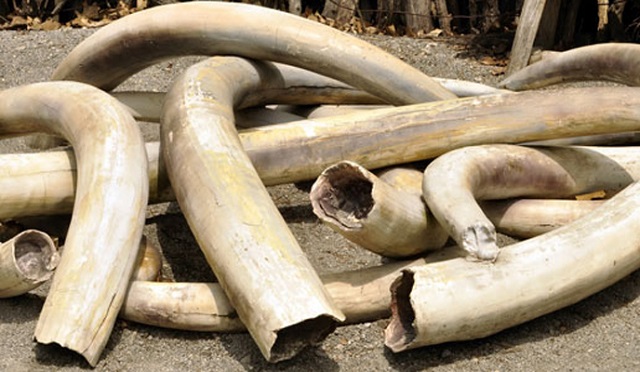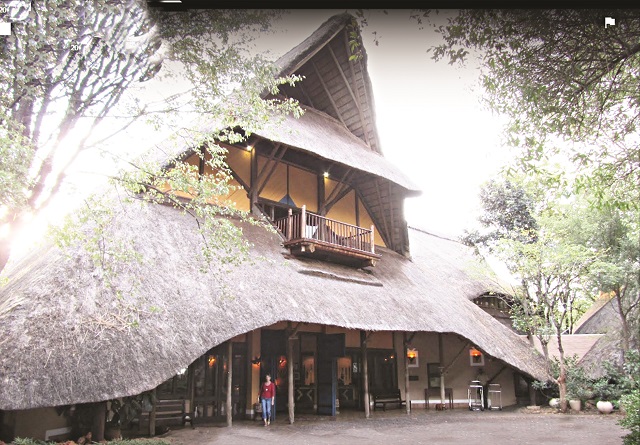Zimbabwe, Sadc brace for tough CITES negotiations

Sifelani Tsiko
ZIMBABWE and other Sadc countries are due to go up against tough opponents when 182 parties gather for the world’s most important wildlife trade conference – the 17th Conference of the Parties (CoP17) to the Convention on International Trade in Endangered Species (CITES) that kicks off in South Africa on September 24.
With a record number of proposals and agenda items, the stage is now set for a bruising fight where Zimbabwe, Botswana, Namibia and South Africa want to win rights to allow them to resume ivory trading to beef up their conservation budgets.
According to the latest CITES statement, parties will be considering 62 proposals to increase or decrease controls on international trade in wildlife and wildlife products.
Proposals have been submitted by 64 Parties from around the world.
In total, close to 500 species may be affected by these proposed changes. Amongst the species involved are African elephant, white rhinoceros, lion, pangolins, silky and thresher sharks, devil rays, as well as many species of rosewood, crocodiles, birds, frogs, lizards, turtles and other animals and plants.
But it is the African elephant and lions that are of major concern to Zimbabwe and its neighbours in the Sadc region.
Stiff opposition by the World Wildlife Fund, the leading organisation in wildlife conservation and endangered species, animal rights activists and other countries to allow trade in ivory has highlighted the unprecedented challenge Zimbabwe and its neighbours face in winning at least a two-thirds majority to advance their proposal to trade in ivory.
CoP 17 is a battle-ridden conference that will run in Johannesburg, South Africa, from September 24 to October 5, 2016.
Zimbabwe and its neighbours are on edge and have been conducting spirited campaigns to advance their arguments.
Environment, Water and Climate Minister Oppah Muchinguri-Kashiri, in a comprehensive report detailing Zimbabwe’s case at COP17, says the up-listing of the African elephant may potentially derail conservation efforts.
“We believe that channeling our efforts towards effective anti-poaching and wildlife crime curbing is the most fundamental issue of concern, rather than “devaluation” of the species altogether through up-listing to Appendix 1. Such measures have historically proven to be ineffective,” says Minister Muchinguri-Kashiri.
At present, there is a legally binding ban on commercial international ivory trade.
According to CITES, while the elephant populations of Botswana, Namibia, South Africa and Zimbabwe are currently on Appendix II, a specific annotation deems all ivory from these populations as being on Appendix I – so all commercial international trade in the ivory of African elephants is currently prohibited under CITES.
Wildlife experts note that moving these four countries’ elephant populations to Appendix I would not alter the current ban.
They say this could only be lifted by a two-thirds majority vote at a CITES CoP.
Namibia and Zimbabwe are seeking to secure this in Johannesburg.
Zimbabwe proposes to amend the annotation that is currently affecting the country’s trade in ivory. It wants to grow its tourism industry through the sustainable utilisation of its wildlife resources.
The southern African country is also seeking to be allowed to sell fully grown elephants, calves and their products such as tusks, skin hides and meat to both local and international buyers.
Zimbabwean wildlife authorities say the elephant is one of the major hunting tourism draw card and has earned the country some $22 million in 2014 and 2015.
It contributes about 20 percent a year to the Zimbabwe Parks and Wildlife Management Authority’s revenue.
Minister Muchinguri-Kashiri says the annual off-take quotas provided through CITES is 500 elephants per year and this has contributed significantly to Zimbabwe’s conservation budget.
She argues that trade bans are counter-productive.
“They actually tend to create a scarcity value and serve to drive the ivory prices through the roof,” says the Environment, Water and Climate Minister.
“CITES should adopt a separate approval process where countries like Zimbabwe with growing populations should remain in Appendix II without annotations while countries with depleting elephant populations should be lifted to Appendix I to enable growth of their populations.”
Zimbabwe and its neighbours are facing an uphill battle at the forthcoming CITES.
Benin, Burkina Faso, Central African Republic, Chad, Ethiopia, Kenya, Liberia, Mali, Niger, Nigeria, Senegal, Uganda and Sri Lanka have reportedly submitted proposals seeking the transfer of the African elephant populations of Botswana, Namibia, South Africa and Zimbabwe from Appendix II to I.
Furthermore, these countries and others on the continent are making the case for Zimbabwe and its neighbours precarious by seeking a battery of measures that include closing domestic markets for elephant ivory, burning ivory stockpiles and a ban on live elephant trade.
“If these countries’ proposal wins at CITES COP17, there will be a ban on trade in our elephants,” says Minister Muchinguri-Kashiri.
She says Zimbabwe and its neighbours encounter tough opposition because of political rather than scientific considerations.
In addition, she bemoans the heavy and dominated presence of what she says is the “well-funded Green Lobby”.
“Developing countries usually struggle to participate effectively, which fact the green lobby takes advantage of,” says Minister Muchinguri-Kashiri.
“Zimbabwe believes CITES should not adopt a one-size-fits-all approach and each case should be dealt with on its own merits. The counter proposals are not in their entirety a true reflection of the elephant situation in Africa, as we have countries like ourselves battling with large populations and over-abundances in a lot of areas.”
Despite stiff opposition, Zimbabwe and its neighbours have also managed to salvage some support.
While on a recent visit to Zimbabwe, African Wildlife Foundation (AWF) president, Kaddu Kiwe Sebunya, said Africa needs to benefit substantially from its wildlife resources to create an incentive for its citizens to protect the continent’s rich wildlife heritage which it has successfully protected for ages.
“The only way to protect wildlife and wildlife places in Africa, is for Africans to benefit directly from the protection and conservation of their natural resources,” said Sebunya.
“We are very clear on that. The principle of this is very clear…..unless Africans benefit from wildlife, we are not able to maintain the protection and conservation of wildlife.”
Sebunya says Africa must unite in a broad and strong push for long overdue wildlife sector reforms that aim to strengthen its protection and conservation strategies while at the same time fashioning innovative ways for local communities to derive benefits and prosper from the sustainable use of its wildlife resources.
As African countries move towards the COP17 in South Africa, he says, it is critical that the continent’s wildlife and wild landscapes which contribute to Africa’s moral and financial bottom line be a part of the “African voice” at the global gathering.
“Conservation is not an end to itself; conservation must be for the benefit of Africans. Those benefits must be explained to Africans. We are losing a lot of elephants because the benefits have not been explained to Africans,” says Sebunya.
Zimbabwe and most other African countries have not benefited substantially from the wildlife resource sector due to poor management, legal and institutional weaknesses as well as other factors related to CITES ban on tourism marketing and distribution of wildlife products.
It is large multinationals and other wildlife poaching syndicates that continue to reap huge benefits that come with wildlife resources. Africa loses 30 000 elephants a year excluding other wild animals.
In addition, Zimbabwe and a few other Sadc countries are sitting on tonnes of ivory which they cannot dispose owing to a CITES ban. Zimbabwe has 96 000 tonnes estimated to be worth close to $100 million.
Most southern African countries which include Zimbabwe, Namibia, Botswana, Zambia, Tanzania and South Africa have always supported the proposal to review of the ban on trade in ivory.
Sadc countries often stand nearly alone in opposing the destruction of illegal ivory stockpiles and a total ban on ivory trade among a slew of measures widely believed to combat poaching.
The countries will want to press for the continuation of the development of a decision-making process for the trade in ivory.
Pressure from western countries and others across the globe to totally ban trophy hunting and trade in ivory and ivory products has been roundly condemned by wildlife and environmental experts in Zimbabwe, Botswana, South Africa and Namibia.
But opponents to these countries argue strongly that accepting their proposals would inadvertently open the door to ivory trade at a time when there is an unprecedented spike in poaching and illegal wildlife trade which is threatening to decimate the continent’s rich wildlife resource base.
They also say poaching is threatening the survival of elephants, rhinos, cheetahs, lions, hippos and a whole list of other animals still found on the continent.
“Doing otherwise would undermine the integrity of the Convention, weakening future protections for countless threatened species,” read part of the WWF statement released ahead of the CITES conference. – Zimpapers Syndication Services.











Comments